Motivational Interviewing and Client Characteristics Analysis
VerifiedAdded on 2022/08/18
|5
|1105
|114
Report
AI Summary
This report delves into the application of motivational interviewing (MI), a psychotherapeutic approach designed to facilitate positive decision-making and behavioral change in clients. It examines how MI can be tailored to address specific client characteristics, including age, gender, race, ethnicity, and cultural background. The report emphasizes the importance of understanding these factors to enhance the effectiveness of MI interventions. It reviews the existing literature on how these characteristics influence the therapeutic process and discusses the implications for clinical practice, highlighting the need for therapists to be sensitive to diverse client needs and beliefs. The report also provides insights into the use of MI with specific populations, such as young people, older adults, and individuals from diverse cultural backgrounds, emphasizing the importance of adapting the approach to meet the unique needs of each client. Overall, the report aims to provide a comprehensive overview of MI and its application to a range of client populations, with the goal of improving therapeutic outcomes.
1 out of 5
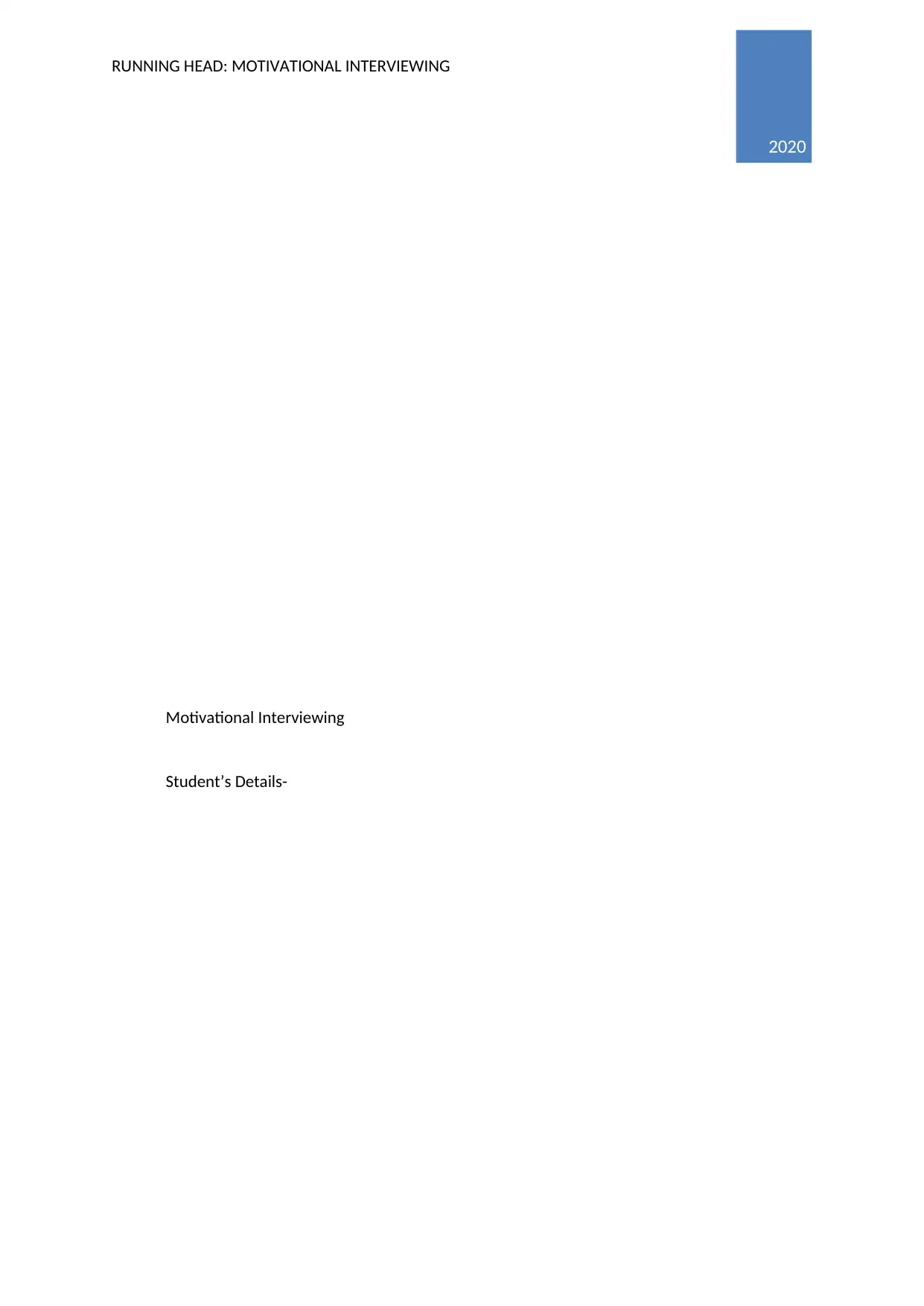
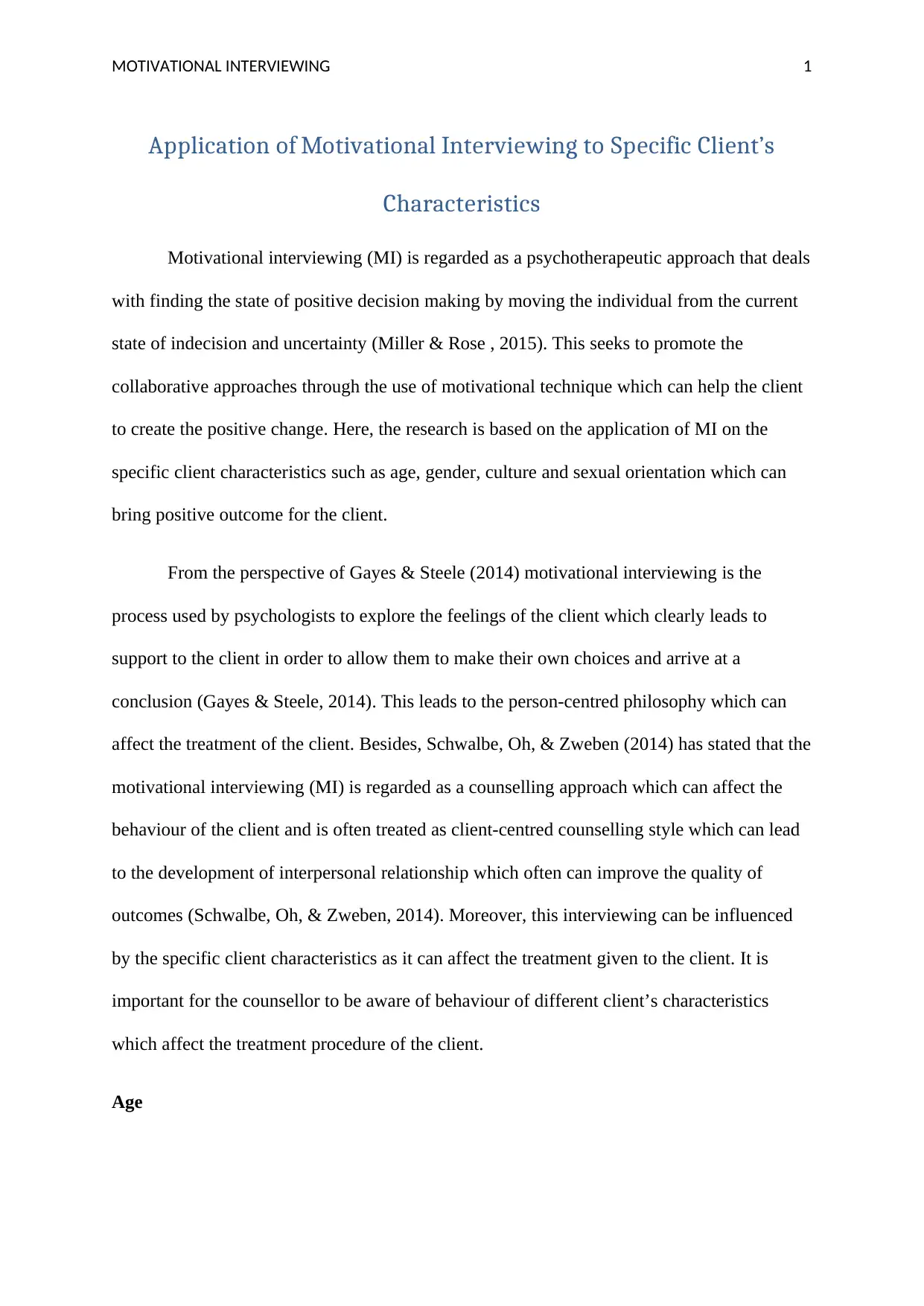
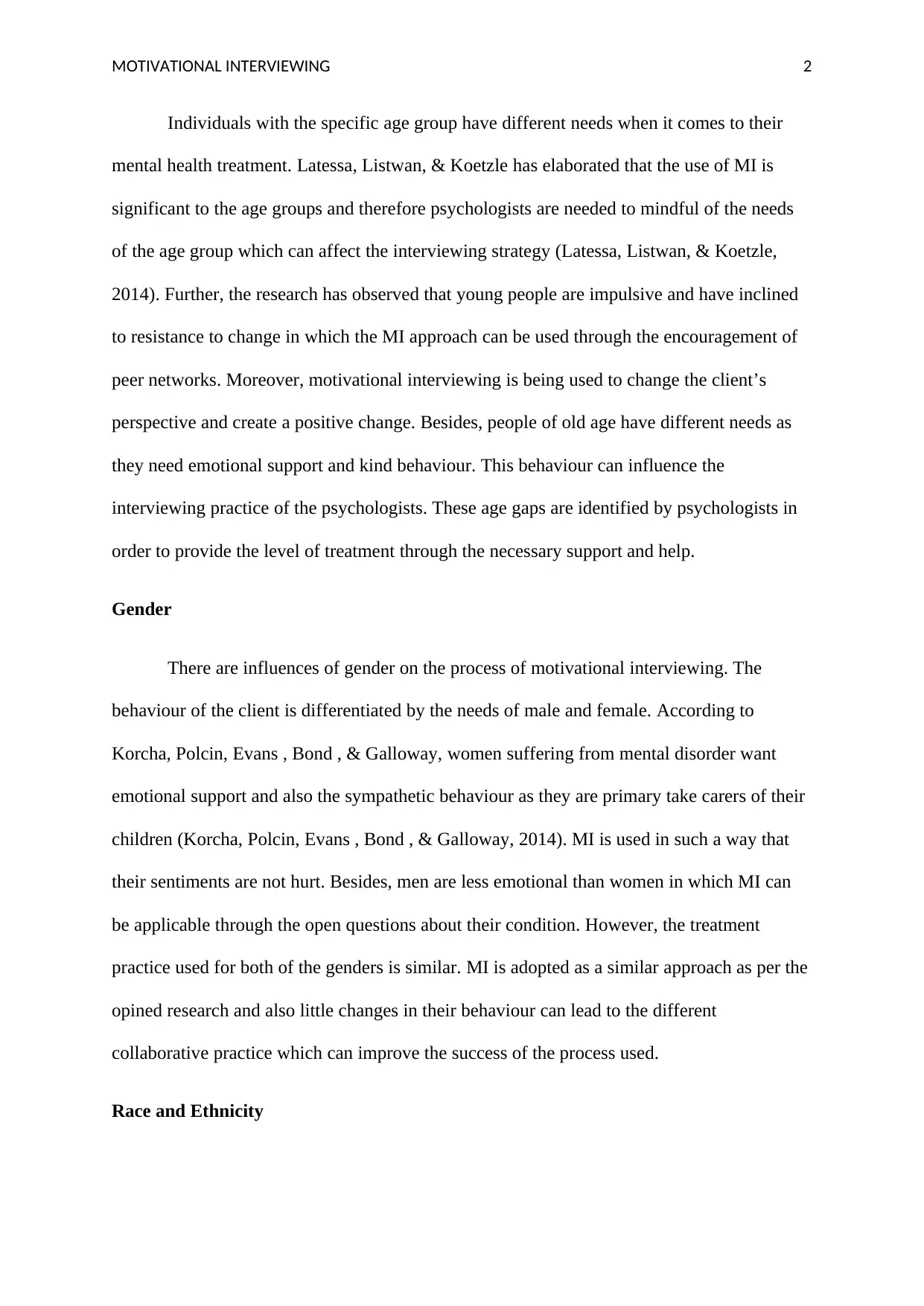

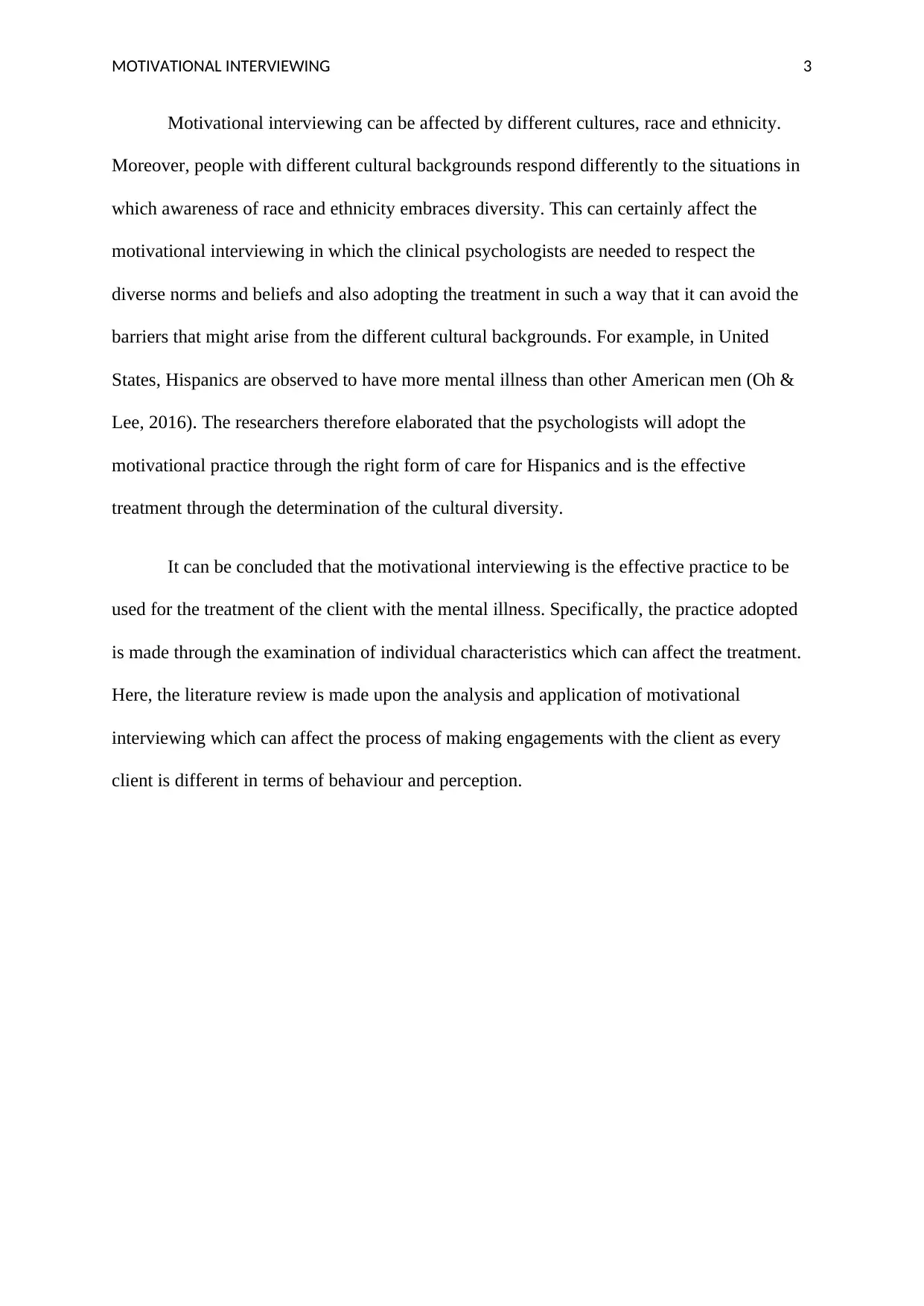
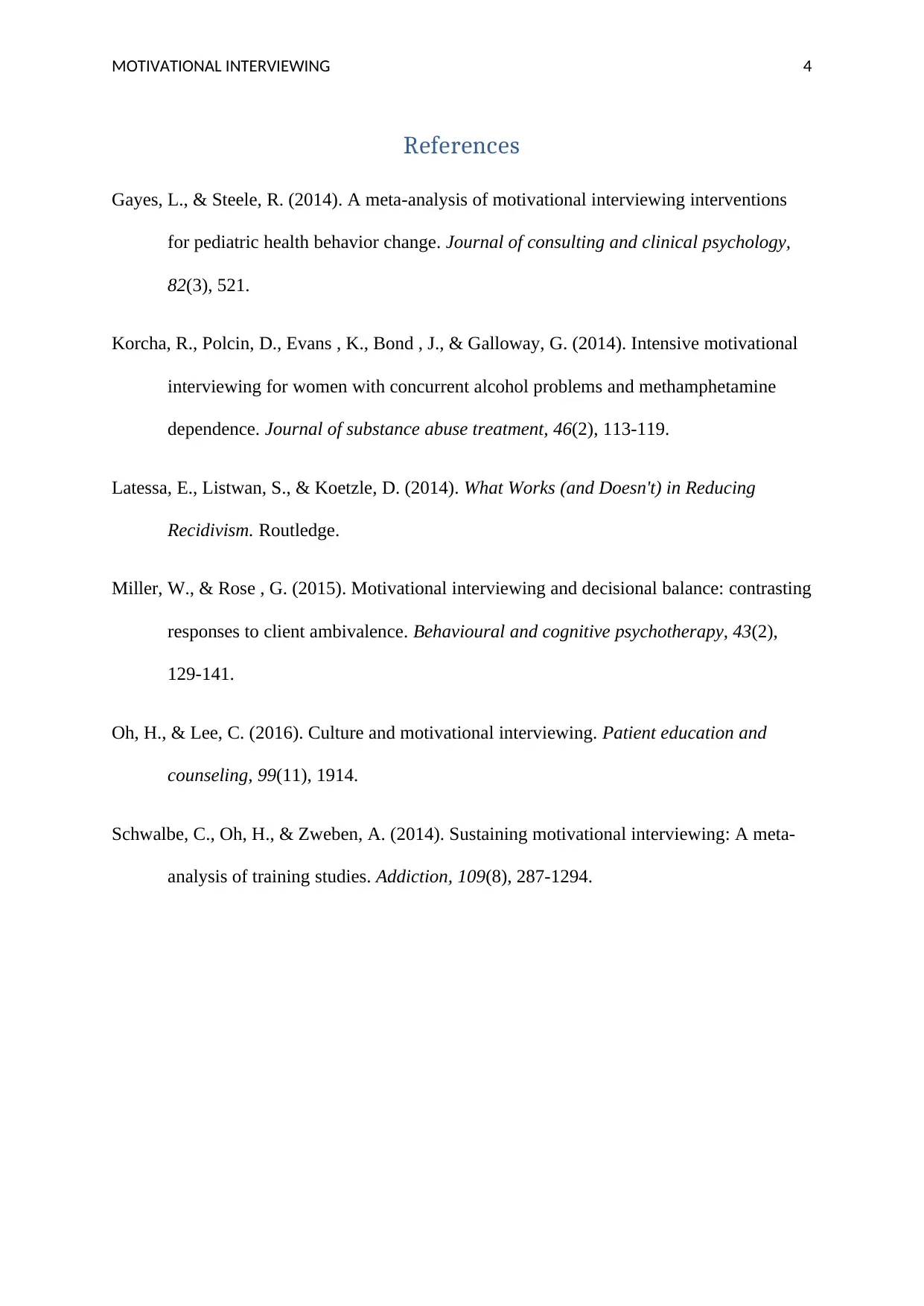






![[object Object]](/_next/static/media/star-bottom.7253800d.svg)